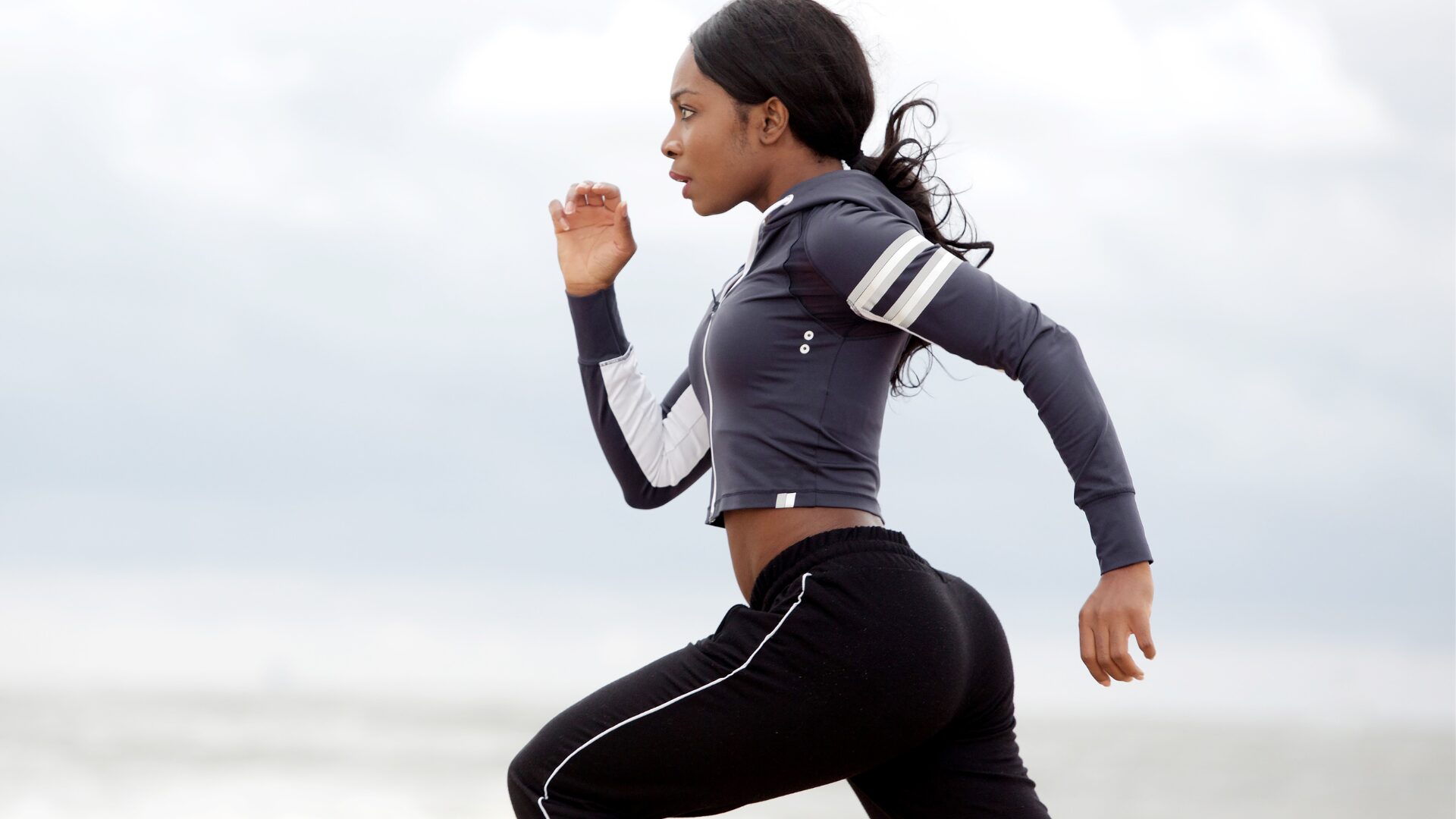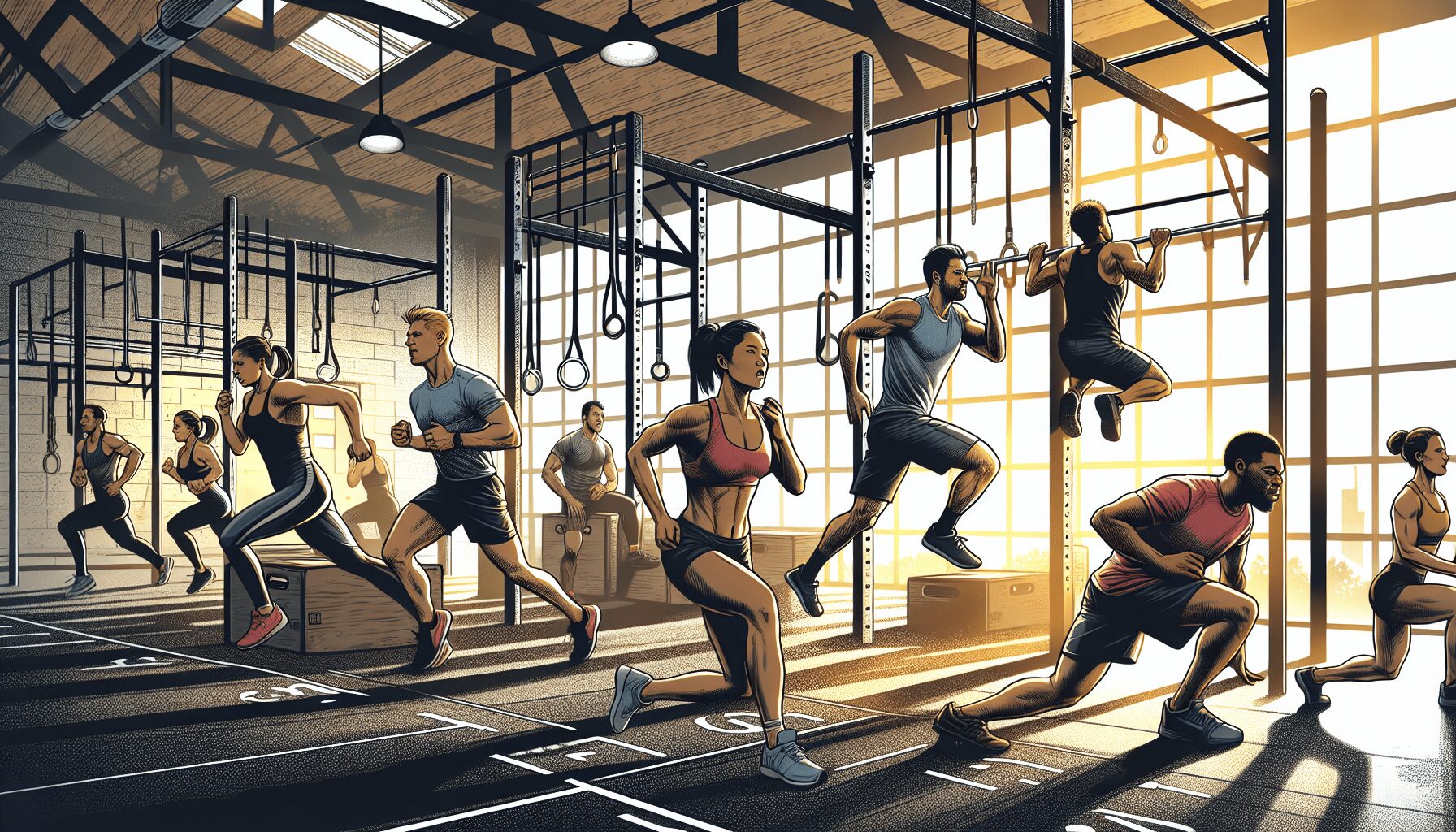The Ultimate Guide to the Murph Workout

Are you ready to take your fitness to the next level? Look no further than the ultimate guide to the Murph Workout.
Created in honor of fallen Navy SEAL Lieutenant Michael P. Murphy, this intense workout has gained popularity for its challenging and rewarding nature. In a single session, you’ll put your strength, endurance, and mental toughness to the test as you conquer a series of exercises including a one-mile run, 100 pull-ups, 200 push-ups, 300 squats, and another one-mile run.
Get ready to push your limits, honor a hero, and achieve a new level of fitness with the Murph Workout.
What is the Murph Workout?
The Murph Workout is a popular and challenging workout that has gained significant popularity in recent years. Named after fallen Navy SEAL, Lieutenant Michael P. Murphy, who was killed in Afghanistan in 2005, the workout was originally created by Murphy himself as a way to push himself and his fellow SEALs to their limits. Today, the Murph Workout has become a staple in the fitness community, known for its intensity and ability to test both physical and mental strength.
The History of the Murph Workout
Lieutenant Michael P. Murphy, or “Murph” as he was affectionately known, was assigned to a special operations team operating in the Kunar Province of Afghanistan. On June 28, 2005, during a reconnaissance mission, Murphy’s team came under heavy enemy fire and found themselves outnumbered and outgunned. In a desperate attempt to save his team, Murphy exposed himself to enemy fire in order to make a radio call for reinforcements. Despite being seriously wounded, Murphy continued to fight until he was ultimately killed.
In honor of his sacrifice and dedication to his team, the Murph Workout was created. Originally known as “Body Armor,” the workout was one of Murphy’s favorite training routines. After his death, his friends and fellow SEALs began performing the workout in his memory, eventually sharing it with the wider fitness community.
The Structure of the Murph Workout
The structure of the Murph Workout is straightforward yet challenging. It consists of the following exercises, completed sequentially:
- Run 1 mile
- Perform 100 pull-ups
- Perform 200 push-ups
- Perform 300 air squats
- Run another 1 mile
There is also an option to wear a weighted vest during the workout, which adds an additional level of difficulty. The recommended weight for the vest is typically 20 pounds for men and 14 pounds for women, although individuals can adjust accordingly based on their fitness level.
Preparing for the Murph Workout
Preparing for the Murph Workout is crucial to ensure a safe and successful experience. By following the steps below, you can set yourself up for a rewarding workout.
Setting Realistic Goals
Before attempting the Murph Workout, it is important to set realistic goals. Understand your current fitness level and evaluate what you hope to achieve from the workout. Setting specific goals, such as completing the workout within a certain time frame or performing all exercises unassisted, can help keep you motivated throughout the process.
Building a Solid Base of Fitness
To successfully complete the Murph Workout, it is essential to have a solid foundation of fitness. Incorporate regular cardiovascular exercise, strength training, and flexibility work into your routine. Gradually increase the intensity and duration of your workouts to gradually build your endurance and strength.
Gradually Increasing Intensity
As with any challenging workout, it is crucial to gradually increase the intensity of your training. Start with modified versions of the exercises and gradually work your way up to the full Murph Workout. This will allow your body to acclimate to the demands of the workout and reduce the risk of injury.
Including appropriate warm-up exercises
Proper warm-up exercises are essential to prepare your body for the demands of the Murph Workout. Incorporate dynamic stretching, mobility exercises, and light cardiovascular activity to increase blood flow to your muscles and improve your range of motion. This will help prevent injuries and enhance your overall performance during the workout.
Equipment Needed for the Murph Workout
To perform the Murph Workout, you will need the following equipment:
Running Shoes
A good pair of running shoes is essential for the two one-mile runs included in the Murph Workout. Choose a pair that provides adequate support and cushioning to minimize the impact on your joints during the run.
Pull-up Bar
A sturdy pull-up bar is required for the 100 pull-ups in the workout. Ensure that the bar is securely mounted and can support your body weight. If you do not have access to a pull-up bar, alternatives like resistance bands or a TRX suspension trainer can be used.
Weight Vest
While not mandatory, a weight vest can be worn to increase the difficulty of the Murph Workout. The additional weight challenges your muscles and cardiovascular system, making the workout even more intense.
Timer or Stopwatch
To keep track of your time and pace during the workout, a timer or stopwatch is essential. This will help you gauge your progress and set new goals for future attempts.
Yoga Mat (optional)
A yoga mat can provide added comfort and support during the push-ups and air squats. If you have sensitive knees or prefer extra cushioning, consider using a mat for these exercises.
Water Bottle
Staying hydrated throughout the workout is crucial. Have a water bottle nearby to replenish fluids and prevent dehydration during breaks.

Proper Technique and Form for the Exercises
Executing proper technique and form is essential to maximize the effectiveness of each exercise and prevent injuries. Pay attention to the following tips for each exercise included in the Murph Workout.
Running
Maintain a steady pace throughout the runs. Avoid starting too fast, as it can drain your energy early on. Focus on proper running form, engaging your core, and breathing rhythmically.
Pull-ups
Grip the pull-up bar with your palms facing away from you and hands slightly wider than shoulder-width apart. Engage your back and core muscles as you pull yourself up, aiming to touch your chest to the bar. Lower yourself back down in a controlled motion, avoiding excessive swinging or momentum.
Push-ups
Start in a plank position with your hands shoulder-width apart. Lower your body until your chest touches the ground, keeping your elbows tucked close to your sides. Push through your palms to lift your body back up to the starting position. Maintain a straight line from head to toe throughout the movement.
Air squats
Stand with your feet shoulder-width apart, toes slightly turned out. Lower your body by bending at the hips and knees, keeping your weight on your heels. Go as low as you can comfortably while maintaining good form, then push through your heels to return to the starting position.
Scaling Options for Beginners
If you are new to the Murph Workout or have limited fitness experience, scaling the workout can help you build strength and gradually progress towards the full workout. Consider the following scaling options:
Reducing Running Distance
If running one mile is challenging, start with shorter distances and gradually increase over time. Begin with a half-mile run or even a quarter-mile run, and gradually work your way up to a full mile.
Using Assistance for Pull-Ups
If performing full pull-ups is too difficult, use assistance to gradually build strength. Resistance bands, a chair, or a partner holding your feet can provide assistance as you work towards unassisted pull-ups.
Modifying Push-Ups
If push-ups are challenging, modify the exercise by performing them on your knees or against a wall. As you gain strength, gradually progress to full push-ups on your toes.
Adapting Squats
If air squats are difficult, modify the exercise by using a chair or bench for support. Perform squats by sitting back onto the chair, then standing back up. As you build strength, gradually decrease the reliance on the chair until you can perform full air squats.
Tips for Conquering the Murph Workout
The Murph Workout is a demanding challenge, but with the following tips, you can conquer it successfully.
Pace Yourself
The Murph Workout is not a sprint; it is a test of endurance. Pace yourself from the beginning and avoid burning out too soon. Find a sustainable pace that allows you to keep moving throughout the workout.
Break Up the Exercises Strategically
Breaking up the exercises into smaller sets can help you manage fatigue and maintain a consistent pace. Consider breaking the pull-ups, push-ups, and squats into sets of 10 or 20, resting briefly between each set. Find a division that works for you and helps you stay on track.
Use Proper Breathing Techniques
Consistent and controlled breathing is essential during the Murph Workout. Focus on inhaling deeply through your nose and exhaling fully through your mouth, especially during the more challenging parts of the workout. Proper breathing will help you maintain focus and endurance.
Stay Hydrated
Hydration is crucial during any intense physical activity. Remember to drink water before, during, and after the workout to replenish fluids and prevent dehydration. Take regular water breaks between exercises to ensure you stay hydrated throughout.
Listen to Your Body
Pay attention to how your body feels during the workout. If you experience pain or discomfort, modify the exercise or take a short break to recover. Push yourself, but know your limits and prioritize safety.
Benefits of the Murph Workout
The Murph Workout offers numerous benefits for individuals of all fitness levels. Some of the key benefits include:
Improved Cardiovascular Endurance
The combination of running and bodyweight exercises in the Murph Workout helps improve cardiovascular endurance. Regularly performing the workout helps increase your heart and lung capacity, allowing you to sustain higher levels of physical activity for longer periods.
Increased Strength and Muscle Tone
The Murph Workout targets multiple muscle groups, including the back, chest, arms, legs, and core. By performing pull-ups, push-ups, and air squats, you can develop increased strength and muscle tone throughout your body.
Enhanced mental toughness
The Murph Workout pushes you to your limits, both physically and mentally. By completing the workout, you develop mental resilience, discipline, and determination. These qualities can positively impact other areas of your life as well.
Weight Loss and Fat Burning
The Murph Workout is a high-intensity and calorie-burning workout. By incorporating it into your fitness routine, you can aid in weight loss and fat burning. The combination of cardio and strength training exercises helps boost your metabolism and increase calorie expenditure.
Community and Camaraderie
The Murph Workout has become a popular community event, often performed on Memorial Day in honor of Lieutenant Michael P. Murphy. Participating in the workout alongside others fosters a sense of camaraderie and community, creating a supportive environment to push through challenges together.
Eating and Hydration Before, During, and After the Workout
Proper nutrition and hydration play a vital role in maximizing your performance and recovery during the Murph Workout. Consider the following guidelines to fuel your body effectively.
Fueling Your Body With Carbohydrates
Carbohydrates are the primary source of energy during high-intensity workouts like the Murph Workout. Ensure you consume a balanced meal containing carbohydrates, protein, and healthy fats 2-3 hours before the workout. This will provide your body with the necessary fuel to sustain your energy levels throughout the workout.
Staying Hydrated
Hydration is essential before, during, and after the workout. Drink water consistently leading up to the workout to ensure you are well-hydrated. During the workout, take regular water breaks to prevent dehydration. After the workout, replenish fluids by drinking water and electrolyte-rich beverages to aid in recovery.
Post-workout Recovery Meal
Following the Murph Workout, focus on consuming a well-balanced meal that includes protein, carbohydrates, and healthy fats. This will help replenish energy stores, aid in muscle repair, and promote overall recovery. Examples of post-workout meals include lean protein sources, whole grains, fruits, and vegetables.
Common Mistakes to Avoid
To maximize the benefits and minimize the risks of the Murph Workout, it is crucial to avoid common mistakes that can hinder your performance or lead to injury. Be mindful of the following:
Skipping Warm-up Exercises
Skipping or neglecting warm-up exercises can increase the risk of injury and compromise performance. Dedicate sufficient time to properly warm up your muscles, joints, and cardiovascular system before starting the workout.
Neglecting Proper Form
Maintaining proper form throughout the Murph Workout is crucial for safety and effectiveness. Avoid sacrificing form for speed or reps. Focus on executing each exercise with proper technique, even if it means performing fewer repetitions.
Going Too Fast Too Soon
Pushing yourself too hard from the beginning can lead to premature fatigue and reduced performance. Pace yourself and gradually increase intensity as your fitness level improves. Remember, the Murph Workout is a marathon, not a sprint.
Ignoring Rest and Recovery
Rest and recovery are essential components of any training program. Overtraining or neglecting rest days can increase the risk of injury and hinder progress. Allow your body time to repair and rebuild between sessions to optimize performance.
Not Modifying When Necessary
It is important to listen to your body and modify exercises or reps as needed. Pushing through pain or discomfort can worsen injuries and hinder progress. Be willing to adapt the workout to your current fitness level and abilities.
Tracking and Measuring Progress
Tracking and measuring your progress is key to staying motivated and achieving your fitness goals. Consider the following strategies to monitor your progress during the Murph Workout:
Keeping a Workout Journal
Maintain a workout journal to track your Murph Workout times, rep counts, and any modifications made. This will allow you to monitor your progress over time and set new goals for improvement. It can also serve as a valuable reference point for future workouts.
Setting Goals and Benchmarks
Setting specific goals and benchmarks can help you stay focused and motivated throughout your Murph Workout journey. Aim to improve your time, increase reps, or reach new milestones as you progress. Clear targets can provide a sense of accomplishment and drive further growth.
Using Technology and Apps
Utilize technology and fitness apps to track your Murph Workout performance. Many smartphones and fitness trackers offer built-in timers and tracking capabilities that can simplify the process. Use these tools to monitor your times, reps, and other metrics to easily assess your progress.
In conclusion, the Murph Workout offers a challenging yet rewarding fitness experience. By setting realistic goals, focusing on proper technique, and gradually increasing intensity, you can conquer this intense workout. With benefits ranging from improved endurance and strength to increased mental toughness, the Murph Workout is an excellent addition to any fitness routine.
Remember to fuel your body appropriately, avoid common mistakes, and track your progress along the way.
Whether you are a beginner or an experienced athlete, the Murph Workout provides an opportunity to push your limits, honor a fallen hero, and join a supportive community of fitness enthusiasts.
Share:
Related Posts

Building Confidence Through Strength Training: A Powerful Journey for Women
Discover how building confidence through strength training empowers women physically and mentally. Learn how lifting weights can help you feel stronger, healthier, and more self-assured.

Vegetable Dumplings
Make your own delicious vegetable dumplings at home with this easy recipe. Packed with fresh veggies and flavor, these dumplings are perfect for a healthy appetizer or meatless meal.

Ashwagandha & Maca Root: Do They Help With Hormone Balance?
Curious about ashwagandha and maca root for hormone balance? Discover how these adaptogenic herbs may support women’s hormonal health, stress relief, and energy naturally.

Avocado & Chickpea Toast
Try this delicious and protein-packed avocado and chickpea toast—perfect for a quick, healthy breakfast or snack. Loaded with fiber, flavor, and plant-based goodness.






